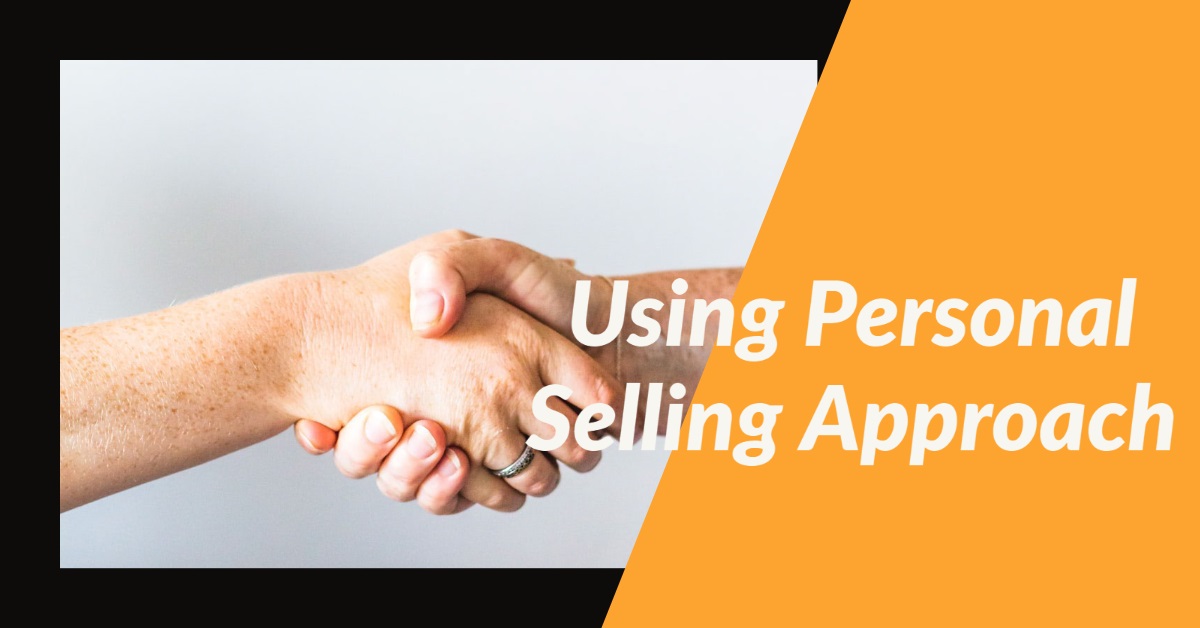Using Personal Selling Approach on Your Ecommerce Store


5mins Read
When it comes to selling online, finding the best, most forward-thinking approaches is vital to the long-term success of the business. It doesn’t matter how well your present sales approach is working, you should always be on the look-out for others—the world of eCommerce can be fickle, and what works for you today may cause you to fail miserably tomorrow.
Why? Well, to put it simply, sales are often based on the feelings and emotions of customers—what makes one customer feel compelled to make a purchase may make another feel repulsed. For instance, if you create a home security commercial that causes fear, but also provides a suitable remedy, customers will be more likely to purchase these products. On the other hand, if the potential customer finds the commercial to be funny or corny, they are less likely to do business with you.
In an age where interactions are becoming increasingly comfortable and less personal, finding ways to connect with potential customers can make all the difference. For this reason, sellers are turning to a personal sales approach to increase sales numbers and improve customer experience.
And in this blog post, our focus is personal selling - what is personal selling and how you can implement it on your eCommerce store.
What is Personal Selling?
Traditionally, Personal selling happens when a sales representative meets a potential buyer to make a sale. It requires building a relationship with the customers and is generally done face to face. In personal selling, a relationship with the customer is created to walk them through the product, and the value the product provides. This creates a selling point, conversions, and encourages customer loyalty.
There are two main ways to engage with the customers: direct (via outbound sales and calls), or digital (via email and other digital means).
The direct method is highly effective, a sales force goes to the clients to meet face to face and build a relationship.
This relationship can help get the sale but is expensive because of costs tied to employment and overhead.
The digital method is more common because it carries a lower expense, but is generally less effective. The goal in the digital method is still to develop a relationship with your customer, but because you're doing it digitally, it can take longer with less impact.
Are you interested in trying out this approach? Here are a few important steps that must be taken to properly execute a personal sales pitch:
Tips in the personal selling process to keep in mind.
- Define your objectives; set your goals and keep your eyes on them.
- Lots of research; the more you research the market, the better. Who is your target? What makes your product different from the competition?
- Make your outreach personalized; segment your customers and make sure what they get is relevant.
- the right outlets for your campaigns based on your customer segments
Major elements you need to consider in personal selling:
- Customer needs: what are the customer's needs to be addressed
- Customer confidence: the customer’s ability to take action.
- The human element: creating a platform where both the customer and the seller can meet or have a conversation
- Customer response: is the customer impression positive or negative.
The beauty of personal selling is that it's not static, it can change as quickly as you notice your customers changing. Personal selling can also help you keep close tabs on customers and inform product decisions. By talking to your customers regularly, you're able to provide feedback to the product teams for new features or adjustments.
Step 1: Getting Prospects
To make a personal sales pitch, you must find someone to pitch the sale to. This method can vary depending on the industry. For instance, if you are into fashion and lifestyle, your prospect list will be customers that have bought from you before or almost did or the customers that signed up for your newsletter
Step 2: Pre-Approach
Now that you have your prospects, you must decide the best way to approach them. If you are dealing with people locally, you may want to set up a live chat or simply email them your approach. Either way, the best approach is the one in which you feel most comfortable making your sales pitch.
Step 3: Approach
From there, you will want to find the most interactive way to present the prospect with the benefits and features of your goods or services. This part of the process does not involve sales; rather, you are simply presenting the prospect with the information in a way that is entertaining and hopefully gets them excited about the product. Whether you decide to do a visual, written, or verbal presentation (or some combination of all three), make sure it is something that you feel will compel your prospect to buy.
Step 4: Pre-Closing
After the presentation, find out how the prospect feels about the product so far. If they have very positive feelings, you may continue to your closing. However, if they have questions and/or objections, you should focus your attention on neutralizing those.
Step 5: Objections
Make a list of rebuttals based on the most common questions and concerns about your product or service so that you can handle potential rejections. For instance, if your items or services are a tad pricey, you might want to tell customers about your payment plan options.
Step 6: The Closing
Although this is often the least favorite part, it is certainly the most important. A good closing doesn't just ask for the sale—it assumes the sale has been made. For instance, instead of saying "would you like to sign up for my service?", you might say something like, "which service package can I offer you?". The point is to be confident without being too pushy.
Step 7: Following Up
Repeat customers are important. However, if you cannot follow up, this may be their last transaction. set a reminder to call, email, or even visit the customer to find out how the product or service is working for them, and if there is anything you can do to enhance their experience. Moreover, this might be an excellent time to offer other accessories or upgrades that can help enhance their experience as well.
Modern customers are growing tired of grandiose, overly technical, and impersonal sales methods. Whether you currently prefer to pitch to large groups of people or are skilled at dealing with people one-on-one, learning the ins and outs of the personal sales method is a worthwhile venture to combat this trend. By taking the time out of your day to present your products and services to individual customers, you will establish trust in your prospects, which can translate to sales.



















 TrustGuard - PCI Security Scanner
TrustGuard - PCI Security Scanner
